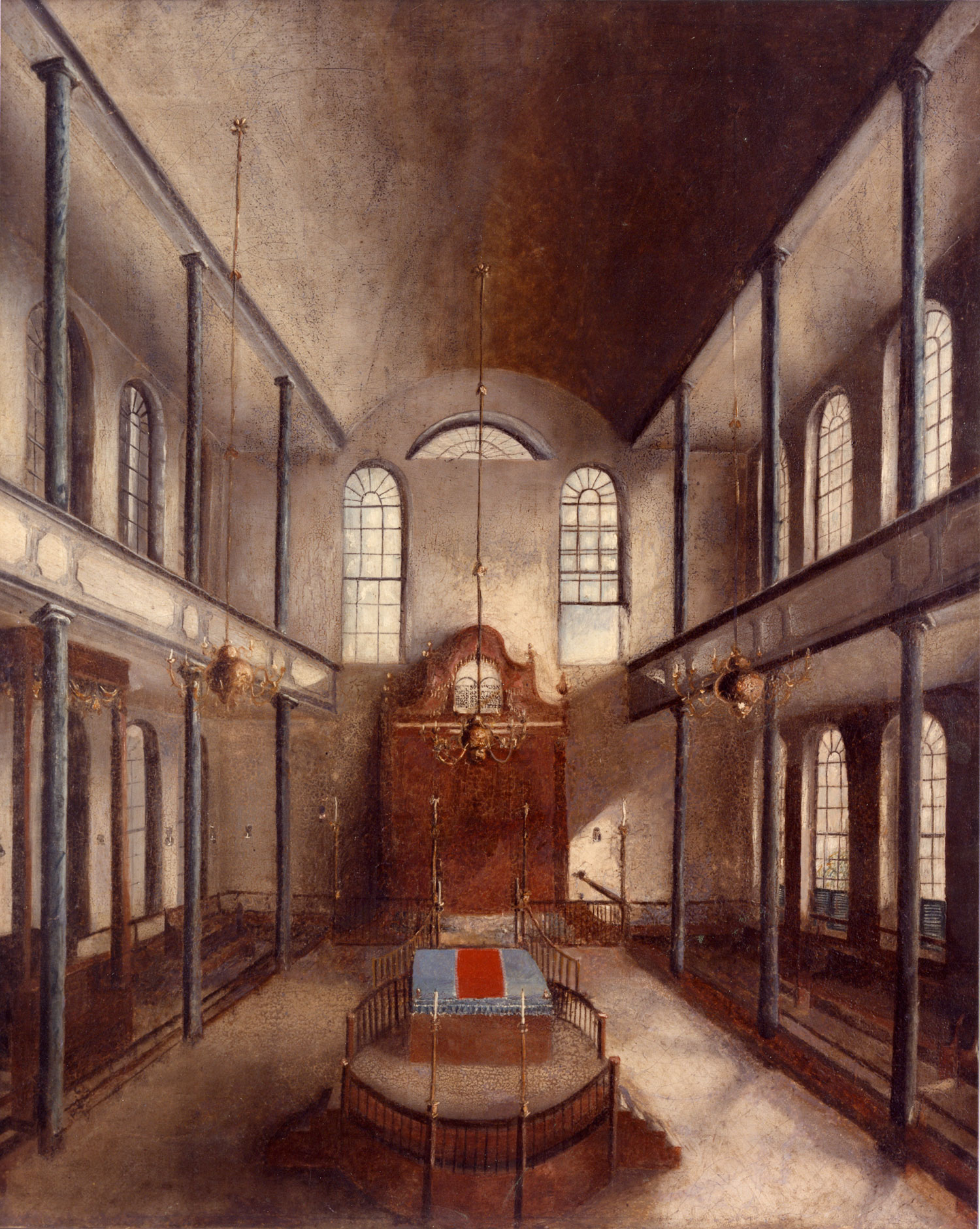One of the early centers of Jewish life in North America was the port city of Charleston, South Carolina. Charleston was a cosmopolitan town, with Anglicans, Presbyterians, Baptists, Quakers, French Protestants, and Jews living in proximity, and mostly in harmony.
Kahal Kadosh Beth Elohim was formed in 1749, originally meeting on Union Street (now State Street) in a building described by member Nathaniel Levin (1816–1899) as “a small wooden house.” The congregation formally incorporated in 1791 and soon built an impressive new synagogue on Hasell Street, whose exterior, with a tall steeple visible from the harbor, resembled neighboring Protestant churches. The building, dedicated in 1794, was destroyed by fire in 1838 and replaced with the present-day temple, designed in the Greek Revival style. The interior of the first building is known only from this representation created from memory after the fire by Jewish artist Solomon Nunes Carvalho (1815–1897).
Beth Elohim was well lit with two rows of five windows on each side, a large window in the front of the narthex (vestibule), and smaller windows on the front of the sanctuary on either side of it. Two tall windows flank the ark on the east wall. Carvalho’s painting shows two registers of slender Doric columns, a gallery with a paneled parapet, a barrel vault over the nave, and a fanlight over the ark. Benches set beneath the balconies lined the sides of the nave facing the center. On the north wall of the sanctuary, a banca (raised dais) was reserved for the congregation’s leaders and elders.
The arrangement of the synagogue’s seating, placement of the ark, and freestanding, rounded, railed bimah followed the Sephardi tradition, well known from the Bevis Marks Synagogue in London and Portuguese Synagogue in Amsterdam. Placement of the bimah closer to the center of the sanctuary than in the typical Sephardi plan, however, perhaps represents a spatial compromise between Ashkenazi and Sephardi members of the congregation.
